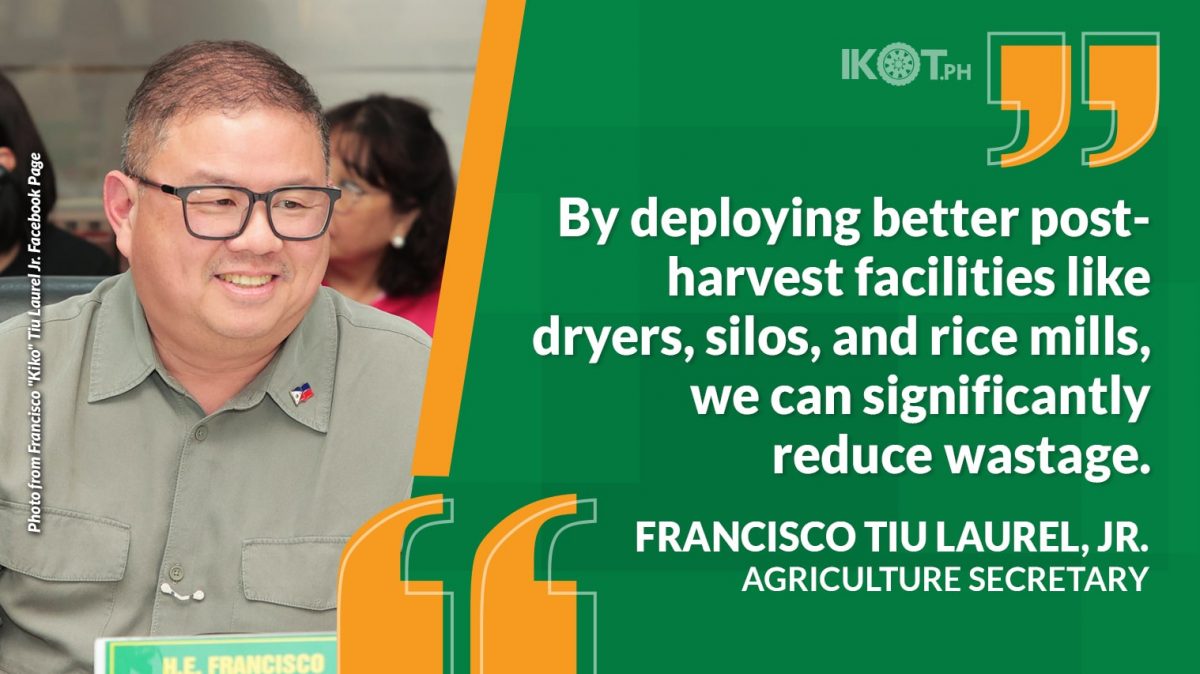The Philippine Center for Postharvest Development and Mechanization (PhilMech) recently inaugurated a P56.5 million rice mill designed to help 1,000 farmers in Piddig, Ilocos Norte, increase their income by as much as 30 percent.
PhilMech director Dionisio Alvindia said the state-of-the-art multi-stage rice mill is part of the P71 million worth of postharvest facilities turned over to the Piddig Basi Multipurpose Cooperative for the benefit of its 1,100 members who manage 1,400 hectares of rice lands.
Included in the package are two recirculating dryers each with a capacity of 12 tons worth P8.1 million and other equipment worth P6.4 million.
Aside from agricultural machinery and postharvest facilities allocated for this year, the cooperative was previously awarded a rice combine harvester valued at P1.8 million.
“The rice mill could process as much as three metric tons of palay per hour, producing 930 50-kilo bags of rice during an 8-hour run.”
Alvindia said the rice mill could process as much as three (3) metric tons of palay per hour, producing 930 50-kilo bags of rice during an 8-hour run.
“This mill will increase the rice recovery from palay to 65 percent, higher by 7 percentage points compared to the national average of 58 percent. And that means a lot to increasing farmers’ incomes,” he explained.
This means that for every 100 sacks of palay processed by the PhilMech rice mill will yield 65 bags of rice, or 7 sacks more compared to the national average. Each sack is equal to 50 kilos.
Agriculture Secretary Francisco Tiu Laurel, Jr. said increasing machinery use and improving post-harvest facilities would greatly help in achieving the government’s goal of increasing food production, ensuring food security and reducing rice importation.
“By deploying better post-harvest facilities like dryers, silos, and rice mills, we can significantly reduce wastage that would help achieve our trifecta goals of increasing farmers’ incomes, providing consumers with more affordable food choices and preserving foreign exchange by reducing food imports,” Tiu Laurel said.
The Rice Tariffication Law passed in 2019 created the Rice Competitiveness Enhancement Fund that allocated P10 billion every year in assistance to modernize rice farming in the country. Half of that amount had been earmarked for farm mechanization administered by PhilMech.
Since the funding provision from RCEF, Alvindia said 146 rice mills have been distributed by PhilMech to farmer cooperatives and associations across the country.
“Farm mechanization aims to significantly enhance agricultural productivity and efficiency to improve farmers earnings and boost agriculture’s contribution to the broader economy.”
“Farm mechanization aims to significantly enhance agricultural productivity and efficiency to improve farmers earnings and boost agriculture’s contribution to the broader economy,” he explained.
In 2023, Ilocos Norte harvested a total 374,309 metric tons of palay from a total area of 68,010 hectares, or a yield of 5.5 tons of rice per hectare.
The provincial agricultural office projected total rice production last year at 220,682 metric tons.
Piddig last year emerged as the third largest rice producing town in Ilocos North, behind Dingras and Solsona.



